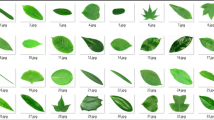Abstract
In machine learning, the accuracy of the system depends upon classification result. Classification accuracy plays an imperative role in various domains. Non-parametric classifier like K-Nearest Neighbor (KNN) is the most widely used classifier for pattern analysis. Besides its easiness, simplicity and effectiveness characteristics, the main problem associated with KNN classifier is the selection of number of nearest neighbors i.e. ‘k’ for computation. At present it is hard to find the optimal value of ‘k’ using any statistical algorithm, which gives perfect accuracy in terms of low misclassification error rate.
Motivated by prescribed problem, a new sample space reduction weighted voting mathematical rule (AVNM) is proposed for classification in machine learning. Proposed AVNM rule is also non-parametric in nature like KNN. AVNM uses the weighted voting mechanism with sample space reduction to learn and examine the predicted class label for unidentified sample. AVNM is free from any initial selection of predefined variable and neighbor selection as found in KNN algorithm. Proposed classifier also reduces the effect of outliers.
To verify the performance of the proposed AVNM classifier, experiments are made on 10 standard dataset taken from UCI database and one manually created dataset. Experimental result shows that the proposed AVNM rule outperforms KNN classifier and its variants. Experimentation results based on confusion matrix accuracy parameter proves higher accuracy value with AVNM rule.
Proposed AVNM rule is based on sample space reduction mechanism for identification of optimal number of nearest neighbor selections. AVNM results in better classification accuracy and minimum error rate as compared with state-of-art algorithm, KNN and its variants. Proposed rule automates the selection of nearest neighbor selection and improves classification rate for UCI dataset and manual created dataset.
This paper has been retracted as its contents were plagiarized from “AVNM: A Voting based Novel Mathematical Rule for Image Classification” by Ankit Vidyarthi and Namita Mittal, published by Elsevier Ltd. in 2015.
An erratum to this chapter can be found at 10.1007/978-3-319-42092-9_48
An erratum to this chapter can be found at http://dx.doi.org/10.1007/978-3-319-42092-9_48
Access this chapter
Tax calculation will be finalised at checkout
Purchases are for personal use only
Similar content being viewed by others
References
Fix, E., Hodges, J.L.: Discriminatory analysis, non parametric discrimination: consistency properties. Technical report No. 4, U.S. Air Force school of aviation Medicine, Randolf field Texas (1951)
Cover, T.M., Hart, P.E.: Nearest neighbor pattern classification. IEEE Trans. Inf. Theor. 13(1), 21–27 (1967)
Wagner, T.: Convergence of the nearest neighbor rule. IEEE Trans. Inf. Theor. 17(5), 566–571 (1971)
Hastie, T., Tibshirani, R., Friedman, T.: The Elements of Statistical Learning, Chap. 2, 2nd edn., pp. 9–38, springer, Heidelberg (2009)
Data Mining Algorithms in R. http://en.wikibooks.org/wiki/Data_Mining_Algorithms_In_R/Classification/kNN
Keller, J.M., Gray, M.R., Givens, J.A.: A fuzzy K-nearest neighbor algorithm. IEEE Trans. Syst. Man Cybern. 15(4), 580–585 (1985)
Shang, W., Huang, H.-K., Zhu, H., Lin, Y., Wang, Z., Qu, Y.: An improved kNN algorithm – fuzzy kNN. In: Hao, Y., Liu, J., Wang, Y.-P., Cheung, Y.-M., Yin, H., Jiao, L., Ma, J., Jiao, Y.-C. (eds.) CIS 2005. LNCS (LNAI), vol. 3801, pp. 741–746. Springer, Heidelberg (2005)
Keller, J., Hunt, D.: Incorporating fuzzy membership functions into the perceptron algorithm. IEEE Trans. Pattern Anal. Mach. Intell. 7(6), 693–699 (1985)
Song, Y., Huang, J., Zhou, D., Zha, H., Giles, C.: IKNN: informative K-Nearest neighbor pattern classification. In: Kok, J.N., Koronacki, J., Lopez de Mantaras, R., Matwin, S., Mladenič, D., Skowron, A. (eds.) PKDD 2007. LNCS (LNAI), vol. 4702, pp. 248–264. Springer, Heidelberg (2007)
Parvin, H., Alizadeh, H., Bidgoli, B.M.: MKNN: modified K-nearest neighbor. In: Proceedings of the World Congress on Engineering and Computer Science (WCECS), pp. 22–25 (2008)
Dudani, S.A.: The distance weighted K-nearest neighbor rule. IEEE Trans. Syst. Man Cybern. 6, 325–327 (1976)
kang, P., Cho, S.: Locally linear reconstruction for instanced based learning. J. Pattern Recogn. 41(11), 3507–3518 (2008)
Wu, X.D., et al.: Top 10 algorithms in data mining. J. Knowl. Based Inf. Syst. 14, 1–37 (2008)
Gou, J.: A novel weighted voting for K-nearest neighbor rule. J. Comput. 6(5), 833–840 (2011)
Mitani, Y., Hamamoto, Y.A.: Local mean based nonparametric classifier. Pattern Recogn. Lett. 27, 1151–1159 (2006)
Zeng, Y., Yang, Y., Zhao, L.: Pseudo nearest neighbor rule for pattern classification. J. Expert Syst. Appl. 36, 3587–3595 (2009)
Wang, J., Neskovic, P., Cooper, L.N.: Neighborhood size selection in K-nearest neighbor rule using statistical confidence. J. Pattern Recogn. 39, 417–423 (2006)
Fukunaga, K.: Introduction to Statistical Pattern Recognition, 2nd edn. Academic press, Cambridge (1990)
Lichman, M.: UCI Machine Learning Repository, Irvine, CA: University of California, School of Information and Computer Science (2013). https://archive.ics.uci.edu/ml/datasets.html
Vidyarthi, A., Mittal, N.: Utilization of shape and texture features with statistical feature selection mechanism for classification of malignant brain tumours in MR images. J. Biomed. Technol. Walter de Gruyter 59, 155–159 (2014)
Bhattacharya, G., et al.: Outlier detection using neighborhood rank difference. J. Pattern Recogn. 60, 24–31 (2015)
Author information
Authors and Affiliations
Corresponding author
Editor information
Editors and Affiliations
Copyright information
© 2016 Springer International Publishing Switzerland
About this paper
Cite this paper
Abbasi, S., Shahriari, A., Nemati, Y. (2016). Retracted: A Novel Voting Mathematical Rule Classification for Image Recognition. In: Gervasi, O., et al. Computational Science and Its Applications – ICCSA 2016. ICCSA 2016. Lecture Notes in Computer Science(), vol 9790. Springer, Cham. https://doi.org/10.1007/978-3-319-42092-9_20
Download citation
DOI: https://doi.org/10.1007/978-3-319-42092-9_20
Published:
Publisher Name: Springer, Cham
Print ISBN: 978-3-319-42091-2
Online ISBN: 978-3-319-42092-9
eBook Packages: Computer ScienceComputer Science (R0)




